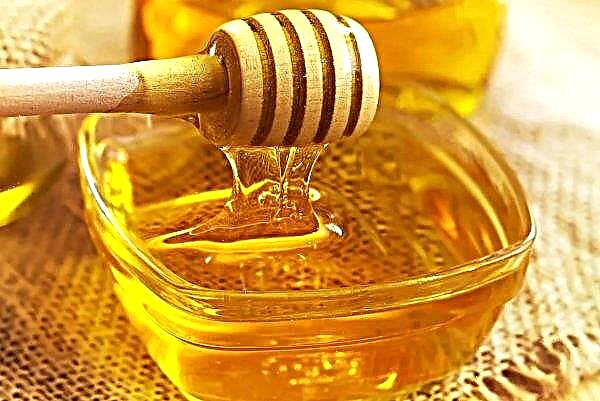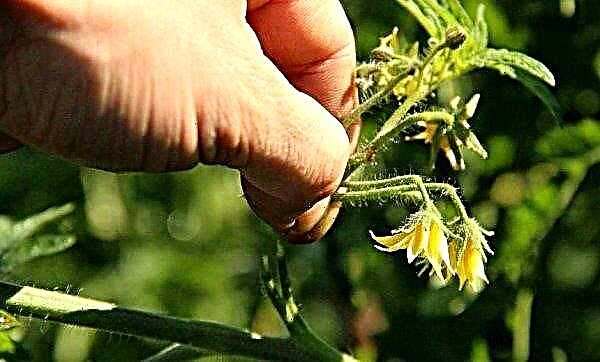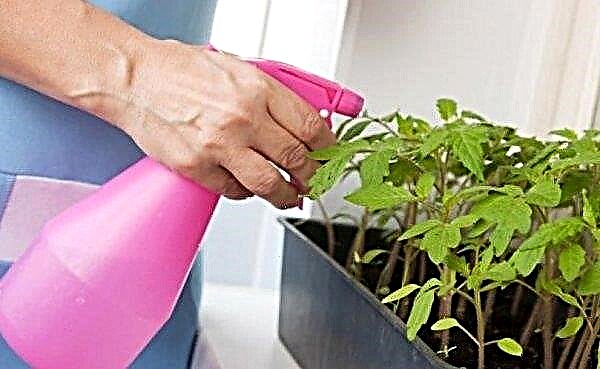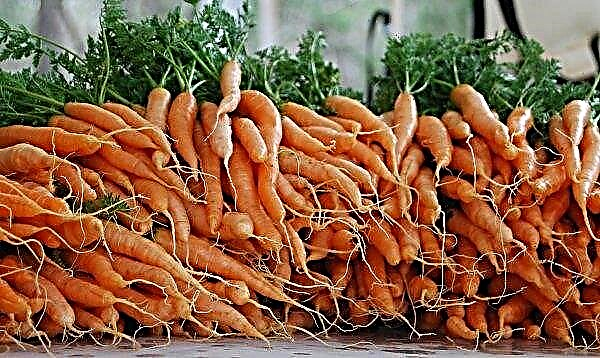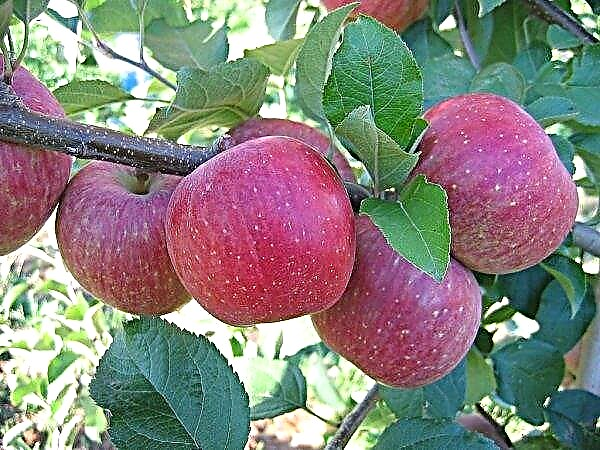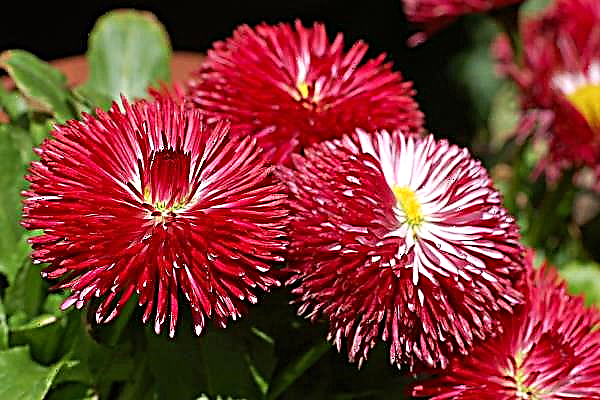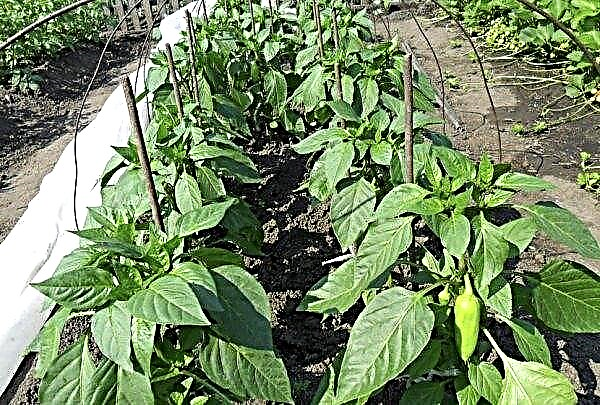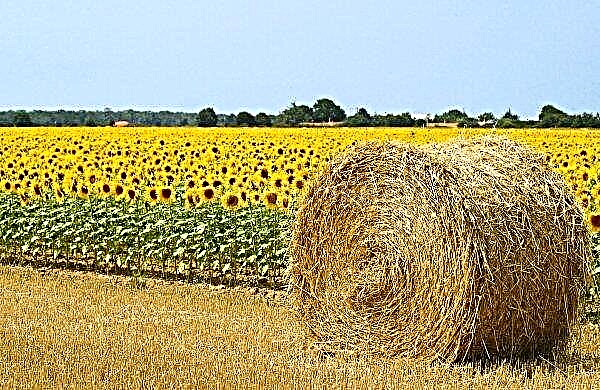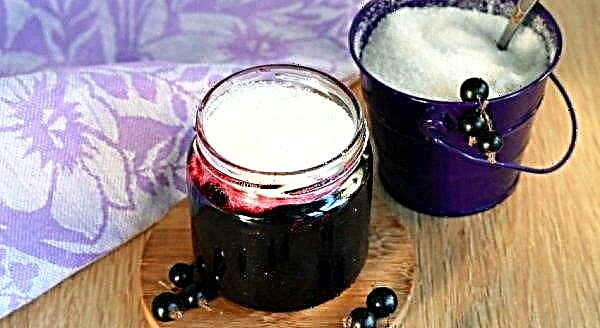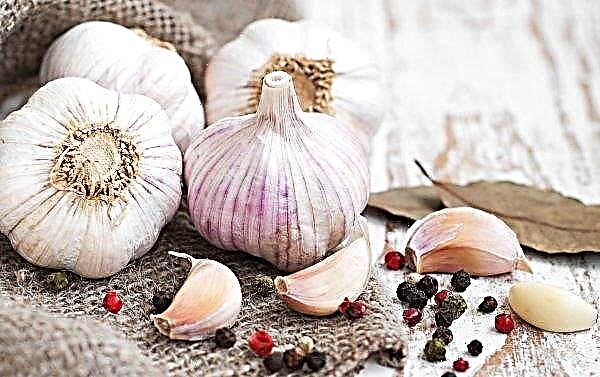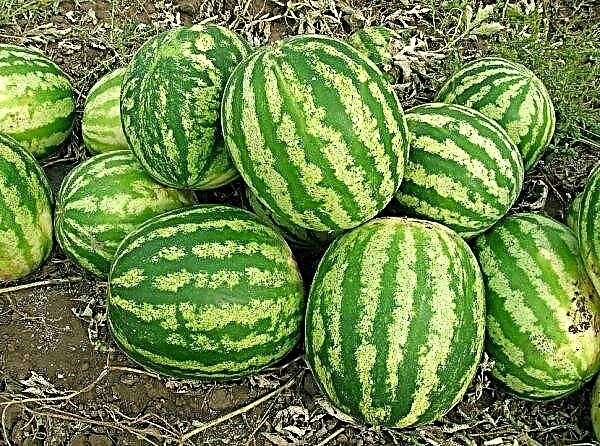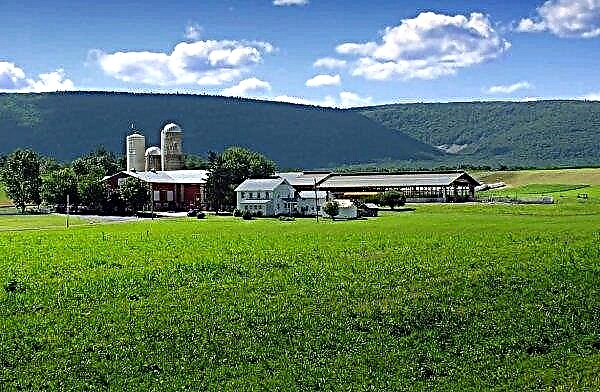Various types of arborvitae are widely used in landscape design, due to their attractive appearance and the evergreen color of needles. The varietal variety of such plants allows each grower to choose the most suitable option, focusing on the purpose of cultivation and personal requirements. One of the popular varieties of this culture is the Western thuja, which, in addition, has many different varieties. What exactly they are remarkable for and what you should know about the organization of care for plantings of conifers - read on.
General description of the species
Western common thuja, like other varieties of thuja, belongs to the Cypress family and is an evergreen coniferous tree, the homeland of which is the western territory of the USA and Canada. In European countries, people learned about it in the middle of the XVI century and since that time they often grow on their sites for decorative purposes. Depending on the variety, western arborvitae grow in height from 10 to 40 m, but always have an oval or more pyramidal crown.
The wood is soft and strong, slightly susceptible to decay and for a long time retains its “forest” aroma. The plant changes needles every three years, so if after this time you notice the yellowing of the needles in some places, do not rush to panic, perhaps after shedding them, new, even greener and more attractive ones will soon appear in the same place.Did you know? The name "thuja" is of Greek origin and means "incense" or "sacrifice" in translation. This unusual definition is associated with the fact that in ancient times the branches of a tree were burned as an offering to the gods.

Popular varieties
Today, there are more than a hundred different varieties of western arborvitae, so it is not surprising that the plant is successfully grown in a variety of climatic zones, even in the far north. In addition to specialized varieties, some universal plants that are well established in any region are also known. In order not to make a mistake in your choice and get a thaw that is most suitable for growing conditions and your personal preferences, it is worth exploring the features of several popular options.
Golden Globe
This variety of western arborvitae is represented by dwarf shrubs, which will probably find a place even in small areas. At the age of ten, the plant reaches only 80 cm in height, characterized by the same values of the diameter of the spherical crown. It is noteworthy that the color of the foliage is not standard green, but yellow, thanks to which with the help of such a plant you can "revive" any standard landscape. The root system is of a superficial type, the bark on the shoots and trunk is brown or reddish-brown, peeling off by narrow strips.
With the organization of proper care, the thuja Golden Globe will become a real decoration even for small gardens or adjoining territories, both as part of the composition and as a tapeworm on the lawn or low hedges.
Important! The shrub becomes golden only in good sunlight, so in order to increase its decorative qualities it is worth planting plants in an open area, possibly in the center of the composition.
Danica
Like the previous variety, the thuja Danica belongs to the dwarf varieties of such plants, which even in the most suitable growing conditions do not add more than 5 cm per year (in height and width). Adult specimens usually do not grow above 60 cm, and their spherical crown reaches a maximum of 55-60 cm in diameter. The bark on the trunk and branches is peeling, gray-brown and may have a reddish tint. In winter, its color may change to brownish-green.
In winter, its color may change to brownish-green.
The needles are thick and scaly, green in color and very soft to the touch. Rounded brown cones grow to 0.6 cm and are held on short shoots densely located on the bush. Rhizome - wide and superficially located, which is why it is worth being very careful when loosening the soil and watering (excess moisture often leads to decay of the root system). When designing the site, it is better to plant a thawed Danica with multi-colored varieties of culture so that it does not get lost against the general green background of the plants.
Globose
Plants of this variety can also be attributed to the group of slow-growing, unpretentious shrubs, with flat and straight, densely spaced shoots that grow uniformly on the sides. At the age of ten, the bush reaches a height of 1–1.2 m, while maintaining the same diameter (annual thuja growth is no more than 5–10 cm). At the initial stages of cultivation, the bark of a young plant is smooth, but eventually becomes fibrous, with a large number of cracks over the entire surface. When designing the territory, thuja Globosa will look great in rock gardens, gardens or evergreen hedges, although they often land on their own.
When designing the territory, thuja Globosa will look great in rock gardens, gardens or evergreen hedges, although they often land on their own.
The shape is round or spherical, but with competent pruning it can be given a different look. The needles are of scaly type, light green in spring and gray-green or more brown in winter. The fruits that appear in the summer are rounded cones reaching a centimeter length. At first they are greenish, but quickly turn brown. The root system is the same as in other varieties: superficial and grows rapidly in the area.
Important! Adult plants are not afraid of frost, so they can winter without shelter in almost any part of the territory of the Russian Federation (except for the extremely northern regions). In the first year of cultivation, it is better to tie young plants with burlap, avoiding frostbite of the delicate bark.
Brabant
The fast-growing Brabant variety can please the gardener with an annual growth of plants within 30 cm in height and 10 cm in width, with maximum rates for adult specimens of 3.5–4 m when grown in the middle lane and up to 15–20 m in the southern latitudes. The crown of the thuja resembles a cone in shape and at a young age seems denser than after 5-10 years of growing a tree-like shrub.  The needles are evergreen, with scales, the fruits are brown, oblong-ovate cones, growing in length up to 0.8–1.2 cm. The root system is superficial.
The needles are evergreen, with scales, the fruits are brown, oblong-ovate cones, growing in length up to 0.8–1.2 cm. The root system is superficial.
An ideal place for growing arborvitae of this varietal variety will be both single and group plantings, in particular when planting a hedge (the optimal planting frequency in this case is 0.5-0.7 m between plants in a row).
Emerald
This variety is deservedly considered one of the best representatives of cone-shaped western thuja with a moderate growth rate. In this case, the evergreen adult conifer is represented by a tree up to 6 m high and 1.8 m wide, with an annual growth of shoots within 10–20 cm. The branches are densely spaced, almost vertical, heavily strewn with decorative evergreen and pine needles that are pleasant to the touch.
The branches are densely spaced, almost vertical, heavily strewn with decorative evergreen and pine needles that are pleasant to the touch.
Fruits are rare, oblong-ovate brown cones growing in length up to 1 cm. Without a haircut, the crown shape will resemble a road cone, but if individual shoots are shortened in a timely manner, an attractive columnar-shaped plant shape can be achieved. Together with the rich green color of the needles, this feature of the thuja Smaragd makes it an excellent option for planting in single plantings or as a hedge, but only if the planting frequency in the row is within 0.6-0.7 m.
Woodwardi
The Woodwardi variety is a dwarf, evergreen shrub, with a dense and dense spherical crown, characterized by the juicy needles of a dark green color. Upon reaching the age of ten, the height of the plant is 40 cm, but the maximum values are still about 1.5 m, with a width of 50-60 cm in diameter. The annual growth of stiff shoots is about 4-5 cm. The needles are standard scaly, the fruits are oblong-elliptical cones that appear on the branches only after 10 years of cultivation. Rhizome - superficially located and quite powerful.
Rhizome - superficially located and quite powerful.
The Woodwardi variety can be considered a universal variant of such plants, since it is ideal for landscaping both large gardens and small personal plots, acting as an excellent complement to other coniferous or flower crops in group plantings or when the thuja is placed separately at some distance from them.
Kolumna
The only variety of varietal columnar thuja, reaching more than 8 m in height. This allows you to create high living fencing of the site, because already at the age of ten the tree reaches a height of 3 m, with a crown diameter of about 1 m.The color of the needles is dark green, but in the light it can lighten, giving a characteristic shine (the color does not change in winter). Cones are small and turn brownish in the fall, with initially green color.
The rhizome of the tree is thin, superficial and densely interwoven with mycorrhiza. The Kolumna variety is excellent for growing in a variety of territories, which is explained by the high frost resistance of an adult tree, although it is better to cover young seedlings in the first two years of growing with burlap and lapnik. It is also considered resistant to many diseases and pests of conifers.
Did you know? Thuja essential oils help to cope with stress and improve a person’s emotional state. In the old days, French monks used decoctions from the needles and bark of the plant to stop bleeding, treat asthma and genital infections.
Landing rules
Plants of any of the above varieties of western arborvitae will grow well and develop in areas illuminated by the sun, closed from sudden gusts of wind. In the full shadow, the crown of trees and shrubs will not be so dense, although some spherical dwarf varieties do not lose their decorativeness even under the broken crown of other trees.
A short drought will not harm the thuja, but regular moderate hydration will be more beneficial. If the groundwater at the landing site comes close to the surface of the earth - it is fearless, but the main thing is that the moisture does not stagnate at the rhizome of the culture and does not cause its rot. When choosing a place for planting the western arborvitae, always consider the maximum possible sizes of plants of a particular selected variety so that neither the rhizome nor the crown of an adult arborvitae interfere with neighboring crops. With the right choice of a place for landing a thuja, caring for it will no longer be such a problematic task.
The landing process itself cannot be called very complicated, but it is best to plan these events in the spring, in compliance with the following stages of landing operations:
- To begin, prepare the planting holes with a diameter of up to 1 m and a depth exceeding the depth of the seedling container by 15–20 cm.
- At the bottom of the pit, lay a 10-cm drainage layer of broken brick or gravel.
- Then pour a mixture of leaves, needles, peat and a small amount of local substrate (about 1/3 of the total volume of the hole).
- Using the transshipment method, move the thuja seedling from the container into the pit and fill the voids with the remaining soil, only so that the root neck is at ground level.
- Well compact the soil in the near-stem zone, water and mulch the soil to preserve moisture in the ground for a long time.
 In the future, the first thing to be done in the new season is to water plants abundantly and fertilize.
In the future, the first thing to be done in the new season is to water plants abundantly and fertilize.
Care Features
Caring for the western thuja differs little from caring for other varieties of conifers and is based on the following recommendations:
- watering of young, freshly planted thuja, will be carried out with a regularity of 1 time per week and provides for a flow rate of 10-20 l of settled liquid per thuja;
- a few days after moistening the soil in the near-stem zone of the plant, it must be well loosened, but not going deeper than 10 cm;
- complex fertilizers for conifers are usually used for top dressing, which can be purchased at any gardening store (consumption rates and rules for making such nutritional compounds are usually indicated on the packaging with them);
- pruning of plants is carried out for the most part for sanitary purposes and involves the removal of broken, diseased or pest-affected branches (before the onset of active sap flow in tissues);
- if the evergreen needles suddenly turned yellow, try to find out immediately the causes of this phenomenon and, if necessary, treat the crown from pests or diseases (special fungicidal and insecticidal preparations are used).
Video: Thuja care
In addition, so that the young plant does not receive sunburn in the open, in light snowy winters it is better to protect it with any chosen covering material.
Only observance of all the requirements for planting and caring for the western arborvitae will guarantee the preservation of its decorativeness for a long time, therefore, choosing an outwardly suitable variety for yourself, it is so important to familiarize yourself with the basic requirements of such plants for cultivation conditions, which will help to grow a really attractive addition to the site.

